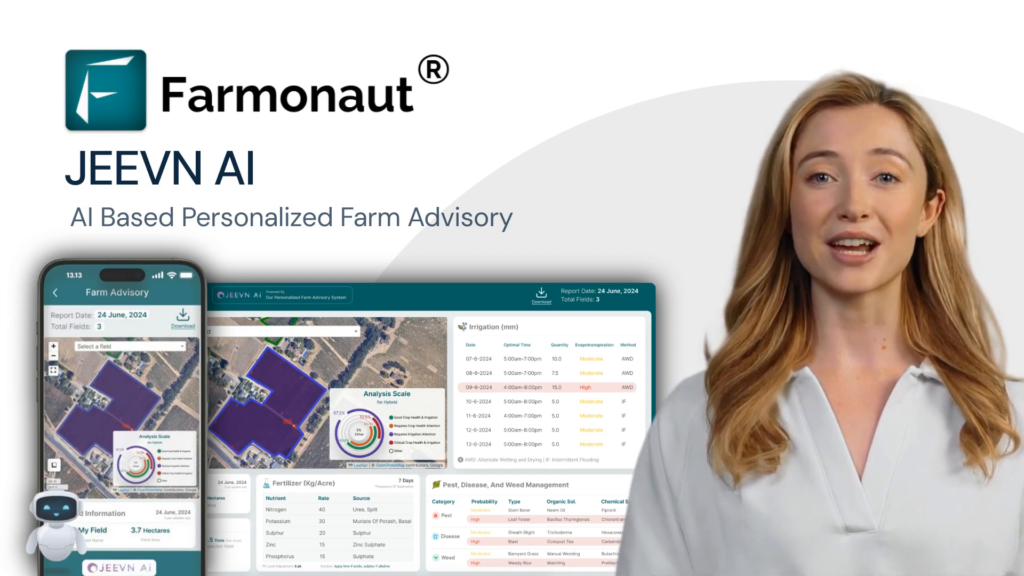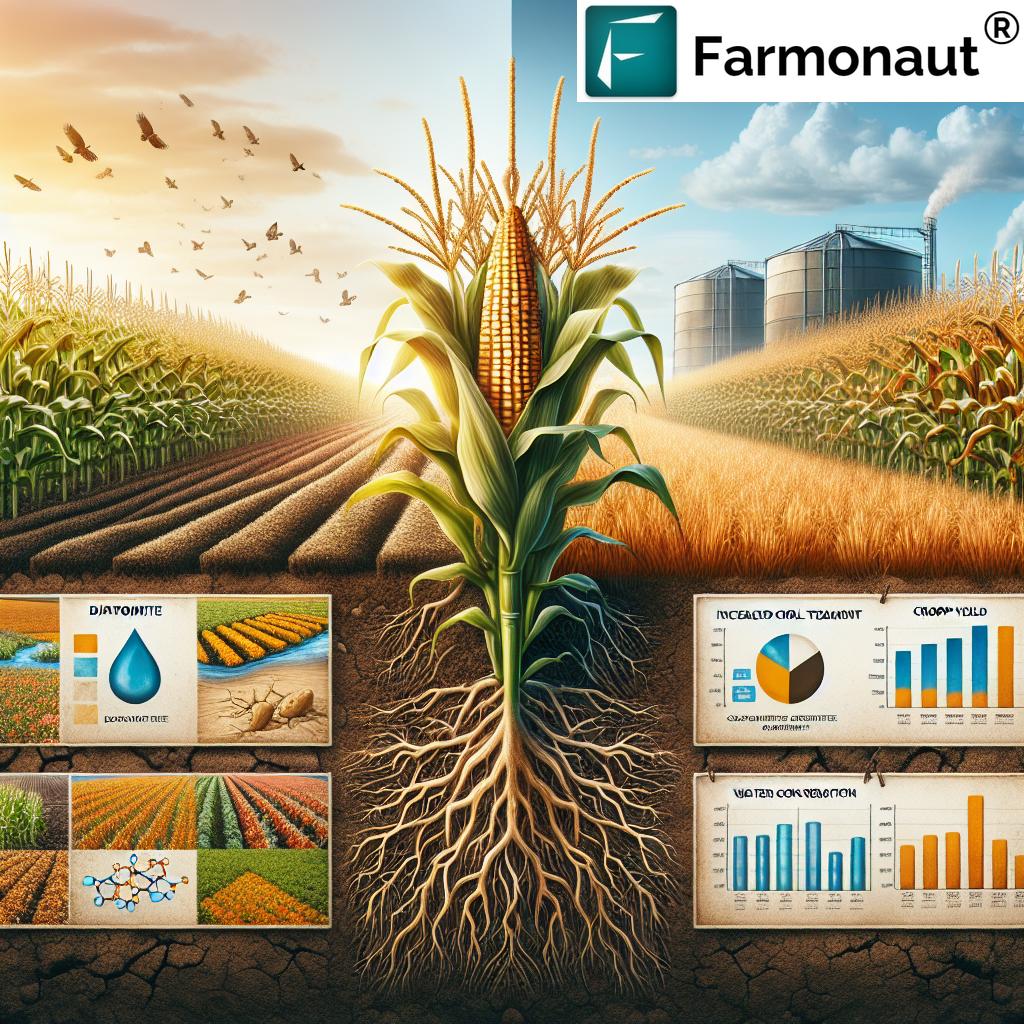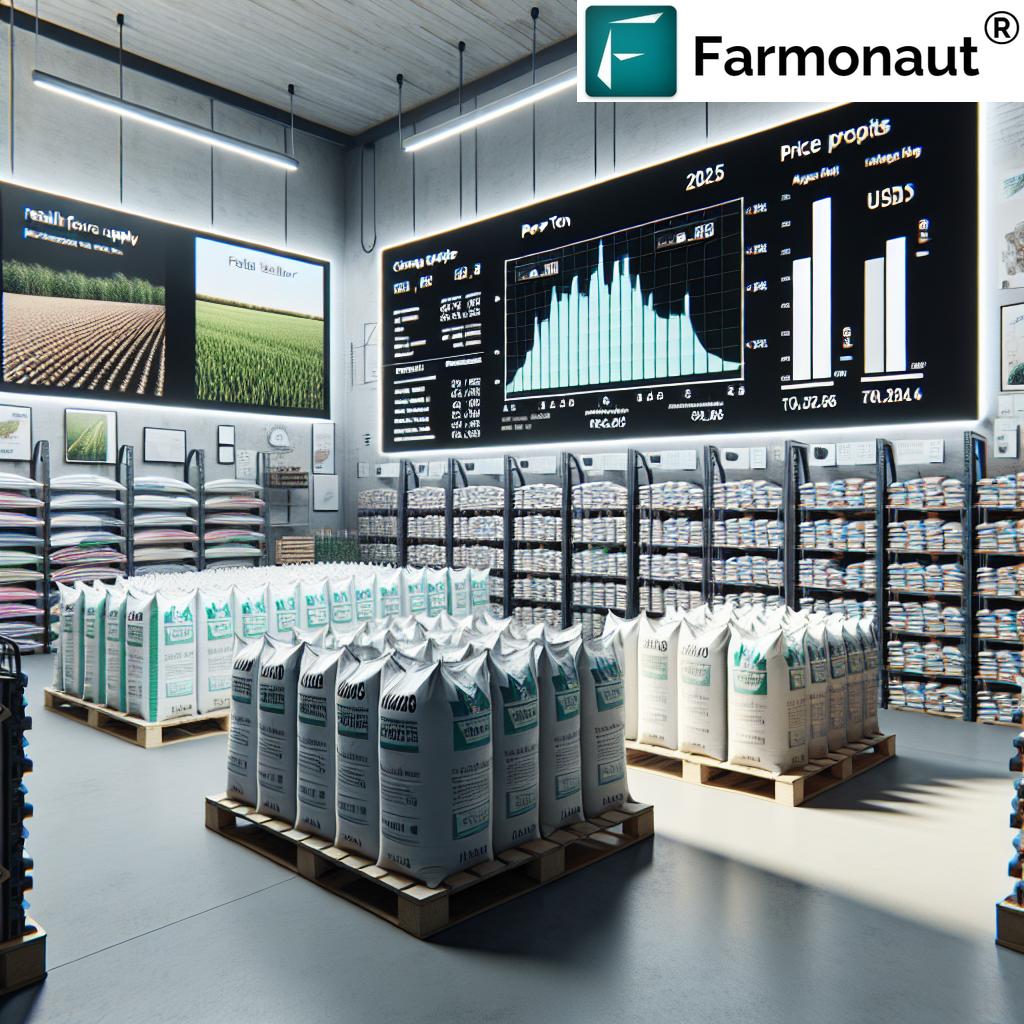Texas Agriculture and Mining: Regional Sustainable Solutions for 2025 & Beyond
“Texas agriculture uses over 14 million acres—sustainable practices could reduce water use by 30% by 2025.”
Introduction: Texas at the Crossroads of Agriculture and Mining
In 2025, regional agriculture and mining solutions form the cornerstone of environmental and economic resilience within Texas. Known for its sprawling land and diverse landscape, Texas stands as a unique regional epicenter where agriculture and mining intersect. With extensive farming operations flourishing alongside some of the largest mineral extraction activities in the United States, the state exemplifies a complex relationship between food production and resource development.
In this comprehensive blog post, we explore the sustainable future of Texas agriculture and mining, highlighting key issues surrounding land, water, and resource management in 2025 and beyond. We delve into the latest technological innovation, regulatory frameworks, sustainable practices, and the integrated roles played by businesses, communities, and solution providers like Farmonaut in achieving balanced economic growth and environmental stewardship.
Texas: A Regional Powerhouse in Sustainable Agriculture and Mining
Texas is often synonymous with scale and diversity when it comes to agriculture and mining. Its diverse geography supports massive cattle ranching, crop production, and thriving fruit cultivation. At the same time, Texas is rich in mineral wealth—containing prolific oil fields, vast natural gas reserves, and extensive mines for coal, salt, gypsum, and increasingly, rare earth elements.
This proximity of farming and mining activities presents unique challenges and opportunities. The result is a dynamic landscape where regional agriculture and mining solutions must not only drive economic prosperity but also address major environmental challenges.
Key Challenges at the Intersection of Texas Agriculture and Mining
The interplay of agriculture and mining in Texas is not without substantial hurdles. Some of the foremost concerns include:
- Land degradation from surface mining, drilling, and heavy vehicular activity
- Water resource depletion and aquifer disruption, particularly in drought-prone regions
- Soil contamination with heavy metals and chemicals from mining operations
- Competing land use objectives—balancing farming, grazing, and mineral extraction
- Environmental impact on native vegetation, wildlife habitats, and local communities
These challenges make it critical to focus on sustainable solutions, innovative technologies, and collaborative management approaches to ensure both sectors play pivotal roles in a resilient local economy without compromising the environment.
“Innovative mining in Texas aims to cut land disruption by 25% through advanced resource management technologies in 2025.”
Sustainable Land Management: Addressing Degradation & Reclamation in Texas
Land is Texas’s most valuable asset. Land degradation from mining operations—including surface mining and drilling—can have lasting effects, leading to erosion, loss of soil fertility, and contamination by heavy metals. Thus, reclamation practices have become front and center in regional agriculture and mining solutions throughout the state.
Key Reclamation Strategies in 2025
- Soil remediation: Introducing clean fill, organic matter, and biological agents to reduce contaminants and restore healthy microbial activity.
- Reforestation & reestablishment of native vegetation: Planting trees, grasses, and native shrubs post-mining, supporting soil health, water retention, and erosion control.
- Reintegrating landscapes for agriculture: Preparing reclaimed lands for crop production or grazing, ensuring support for crops and biodiversity alike.
- Regulatory enforcement: Requiring mining companies to submit reclamation plans and performance bonds, ensuring effective implementation when extraction operations cease.
Reclamation initiatives not only mitigate the consequences of mining, but also open up opportunities for new agricultural and agroforestry activities, creating a more integrated and sustainable Texas landscape.
Innovative Water Management for Drought-Resilient Texas Agriculture and Mining
Water is the lifeblood of both farming and mining in Texas, a state that frequently faces drought conditions. Both sectors exert substantial pressure on water resources, increasing the need for integrated solutions that can reduce freshwater consumption while optimizing productivity.
Water-Efficient Technologies in 2025
- Mining: Deployment of water recycling systems, closed-loop cooling, and advanced slurry separation technologies to minimize withdrawal from natural sources.
- Agriculture: Precision irrigation (like drip irrigation), use of soil moisture sensors, satellite imagery, and real-time monitoring for adaptive irrigation management.
- Ecosystem-scale resource planning: Coordinated management of rivers, aquifers, and water basins to meet the needs of both sectors and maintain sustainable flows for people, industry, and nature.
- Collaboration between farmers and miners: Sharing data about water use—for example, using satellite technology (like Farmonaut) to monitor water use and identify areas for improvement.
Improving water management remains a critical area of focus for regional agriculture and mining solutions throughout Texas, with ongoing innovation steadily reducing pressure on vital aquifers.
Technological Innovation in Regional Agriculture and Mining Solutions
Technological advancements are redefining how regional agriculture and mining solutions are implemented in Texas in 2025. Harnessing the power of satellite imagery, automation, AI, and data analytics, both sectors are making giant leaps in sustainability and operational efficiency.
Cutting-Edge Technologies and Their Impact
- Remote Sensing: Use of satellite-based multispectral imagery and GIS for land use mapping, monitoring vegetation health, identifying soil degradation, and planning extraction to minimize land conflict.
- Drones & Automation: Automated vehicles and drones for surveying fields or mines, reducing the environmental footprint and improving safety.
- Artificial Intelligence & Predictive Analytics: Predictive modeling for crop yield, water availability, or mineral deposit location, optimizing resource management.
- Blockchain Traceability: Ensuring transparency across supply chains, offering compliance and security from farm or mine to end user. Read more about blockchain-based traceability for agriculture and mining on our platform.
These innovations are not exclusive to large enterprises—small and medium-scale producers, enabled by accessible services and apps, can now benefit from actionable insights that help them stay profitable and sustainable in a fast-changing Texas economy.
Regulatory Frameworks & Governance: Supporting Sustainable Texas Agriculture and Mining
Policy, regulation, and governance form the backbone of regional agriculture and mining solutions in Texas. State agencies increasingly coordinate to balance incentives and oversight, encouraging sustainable practices while safeguarding environmental and community interests.
Key Areas of Regulatory Focus in 2025
- Land Use Planning: Integrated plans align mining permits with the preservation of high-value agricultural lands and habitats.
- Environmental Impact Assessment: Rigorous, science-based analyses required for major projects, with mechanisms for public input and stakeholder engagement.
- Incentives for Sustainable Operations: Tax breaks, grants, or credits for adopting eco-friendly extraction or precision agriculture systems.
- Compliance and Enforcement: Ongoing monitoring—often using remote sensing and satellite data—ensures companies adhere to regulations and performance benchmarks.
State frameworks are designed to balance economic development, regulatory certainty for businesses, and protection for future generations across the Texas landscape.
Community-Integrated Approaches and Collaborative Opportunities
The best regional agriculture and mining solutions in Texas involve not just technology, but people—farmers, miners, environmentalists, and local governments, all collaborating to create lasting value.
- Agroforestry on Reclaimed Lands: Turning old mines into sites for silvopasture, fruit orchards, or bioenergy crops. Initiatives like these help restore soil health, sequester carbon, and create new income opportunities.
- Reusing Mining By-Products: Safe, responsible application of mining by-products as soil amendments, under regulatory oversight, to improve fertility and structure for agricultural lands.
- Shared Data Portals: Utilizing digital platforms for all stakeholders to access information on water use, resource management, and reclamation progress.
By integrating community-driven initiatives into the broader sustainability agenda, Texas is charting a path toward a more cooperative, resilient, and equitable rural and industrial landscape.
Estimated Impact of Sustainable Practices in Texas Agriculture vs. Mining (2025)
| Practice/Technology | Application Sector | Estimated Water Saved (gallons/year) | Estimated Land Preserved (acres/year) | Reduction in CO2 Emissions (tons/year) | Technology Adoption Rate (%) |
|---|---|---|---|---|---|
| Precision Irrigation (Soil Moisture Sensors, Drip) | Agriculture | 1,500,000,000+ | 600,000+ | 380,000+ | 35 |
| Solar-Powered Mining Equipment | Mining | 250,000,000+ | 80,000+ | 500,000+ | 22 |
| Conservation/No-Till Farming | Agriculture | 900,000,000+ | 490,000+ | 450,000+ | 42 |
| Eco-friendly Mineral Extraction (Closed-loop Processing) | Mining | 175,000,000+ | 95,000+ | 320,000+ | 18 |
| Satellite Remote Sensing Monitoring | Both | Varies (est. millions per site) | 60,000+ | 120,000+ | 47 |
How Farmonaut Supports Sustainable Solutions in Texas Agriculture and Mining
In the world of regional agriculture and mining solutions, having reliable and accessible data is a vital success factor. We at Farmonaut are committed to empowering stakeholders across Texas with the actionable insights needed to drive sustainable, efficient, and resilient operations.
Key Farmonaut Solutions to Optimize Texas Agriculture and Mining
- Satellite-Based Monitoring: Our multispectral satellite imagery service lets users monitor crop health, mineral site activity, soil conditions, and structural integrity—all from your phone or web browser. This is invaluable for both regulatory compliance and daily management. Check out our large scale farm management tools.
- Jeevn AI Advisory: Get real-time weather, irrigation, and mining guidance with our AI system, delivering tailored productivity improvements right when they’re needed most.
- Blockchain Traceability: Our product traceability tools utilize blockchain to help agricultural and mining enterprises verify the integrity and security of their supply chain data. Learn how at Farmonaut Product Traceability.
- Fleet and Resource Management: For Texas operators managing vehicle and equipment fleets, optimize movement, reduce cost, and improve safety with fleet management solutions.
- Environmental Impact Tracking: Companies aiming for sustainable practices can quantify carbon emissions, set reduction targets, and monitor carbon impact using our carbon footprinting dashboard.
- Crop Insurance & Loans: We also support agriculture and mining financial needs, with satellite-based verification for insurance and loans. Details available at our crop loan and insurance page.
- API Access: Integrate satellite analytics into your own systems using our robust API and developer documentation (API Docs).
Our value proposition is simple: affordable, flexible, and actionable satellite and AI-driven technology—providing the tools Texas needs to make data-driven regional agriculture and mining solutions a reality.
Farmonaut Subscription Options
Explore our affordable subscription plans for advanced monitoring, data insights, and decision support for agricultural and mining operations in Texas:
Future Outlook: Evolving Sustainability in Texas Agriculture and Mining Beyond 2025
As we look to the future, Texas agriculture and mining stand at the forefront of sustainability, integrating technology, people, and policy to achieve mutual goals. The years ahead promise:
- Expanded use of AI and satellite tech for real-time resource management, regulatory compliance, and predictive impact assessment.
- Greater adoption of community-driven reclamation and cooperative water management in drought-prone regions.
- Broader incentives for sustainable extraction, conservation tillage, and carbon reduction strategies.
- Proliferation of blockchain traceability to boost supply chain transparency from field and mine to end user.
- Restoration of vast areas punctuated by new forest plantations, crop zones, and biodiverse grazing lands previously impacted by extraction, thanks to continual land restoration efforts.
By aligning regulatory frameworks with emerging technology and community priorities, Texas will remain a national leader in advancing regional agriculture and mining solutions for the challenges of 2025 and beyond.
Frequently Asked Questions (FAQ) on Regional Agriculture and Mining Solutions in Texas
Q1: What makes Texas unique in the context of agriculture and mining?
Texas hosts some of the largest and most diverse agriculture and mineral extraction activities in the United States. The proximity of major farming areas to large mining operations makes integrated land, water, and resource management strategies more critical here than almost anywhere else.
Q2: How does sustainable land reclamation work in mining?
After mining activities cease, sustainable reclamation involves remediation (removing or neutralizing contaminants), reforestation, and the reestablishment of native vegetation. The goal is to restore soil health, water retention, and biodiversity—enabling crops and grazing to resume.
Q3: What technologies are transforming agriculture and mining in Texas?
Remote sensing, AI-powered analytics, blockchain traceability, and precision irrigation systems are revolutionizing both sectors. These innovations optimize resource use, reduce environmental impact, and enhance regulatory compliance.
Q4: How do reclaimed mine lands support agriculture?
With proper remediation and restoration, previously mined lands can host new crops, grazing, or agroforestry. Native grasses and trees stabilize soils, while diverse vegetation supports pollinators and wildlife.
Q5: Can small-scale farmers and miners benefit from innovations like those offered by Farmonaut?
Yes. We at Farmonaut design our satellite-powered tools and analytics to be accessible for individual users—including small and medium enterprises—helping them improve yield, reduce costs, and navigate complex regulatory demands. Try our web and mobile app for intuitive access.
Q6: How is water management integrated across sectors?
Through collaborative data-sharing (often powered by satellites and remote sensors), mining and agricultural stakeholders can optimize their water use, identify inefficiencies, and adapt rapidly during drought conditions.
Conclusion: Leadership in Regional Agriculture and Mining Solutions
Texas agriculture and mining serve as a microcosm of the resource, environmental, and economic challenges confronting industrial regions in 2025. By focusing on sustainable practices, embracing technological innovation, and fostering regulatory and community-driven solutions, the state is building a future that maximizes opportunity while protecting foundational resources.
Solutions are not only technical but also human: empowered by data, guided by stewardship, and strengthened by collaboration. With tools like those offered by Farmonaut, Texas stakeholders are better able to monitor, manage, and innovate within their lands, water, and mineral assets.
The intersection of regional agriculture and mining solutions will remain a critical area of focus as resilience, productivity, and environmental integrity become non-negotiables for the next generation of Texans.
Want to take part in the next era of sustainable regional agriculture and mining in Texas?
Discover the accessibility of our web and app platform:
Try Farmonaut Web App
Supercharge your resource management and field monitoring with mobile convenience:
Download Android App | Download iOS App
Or integrate analytics directly into your systems via our Farmonaut API and full API documentation.
For operations looking to lead in carbon accounting, explore our carbon footprinting dashboard today. For supply chain integrity, understand the power of blockchain traceability in agriculture and mining.
The transition to sustainable, data-driven, and integrated land management in Texas is well underway—join us in shaping that future now.













